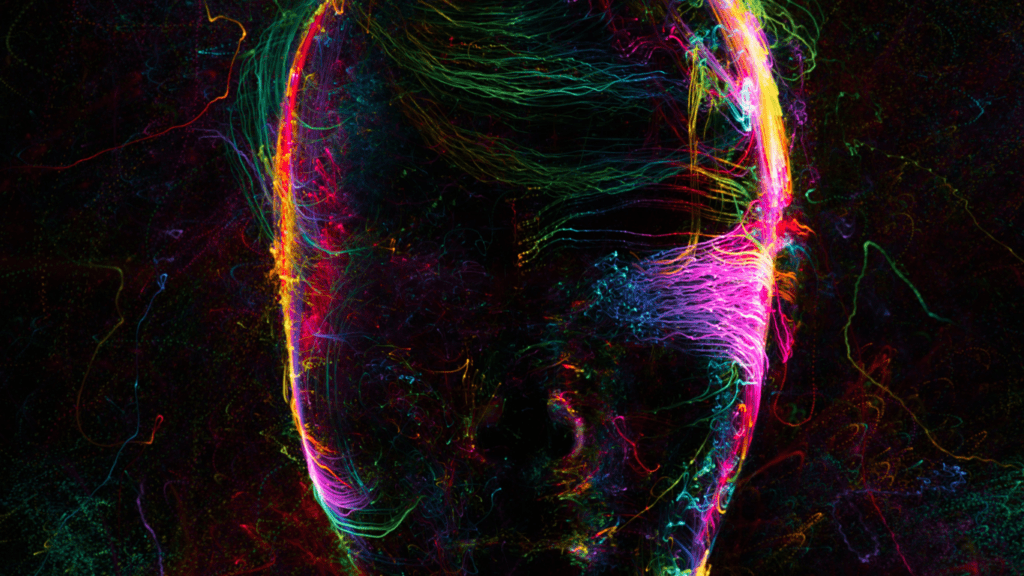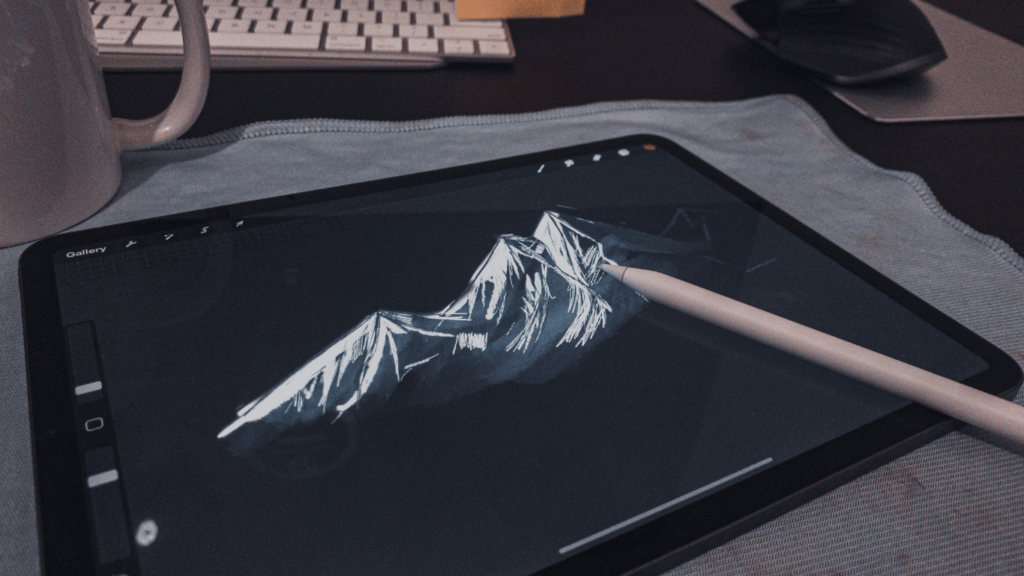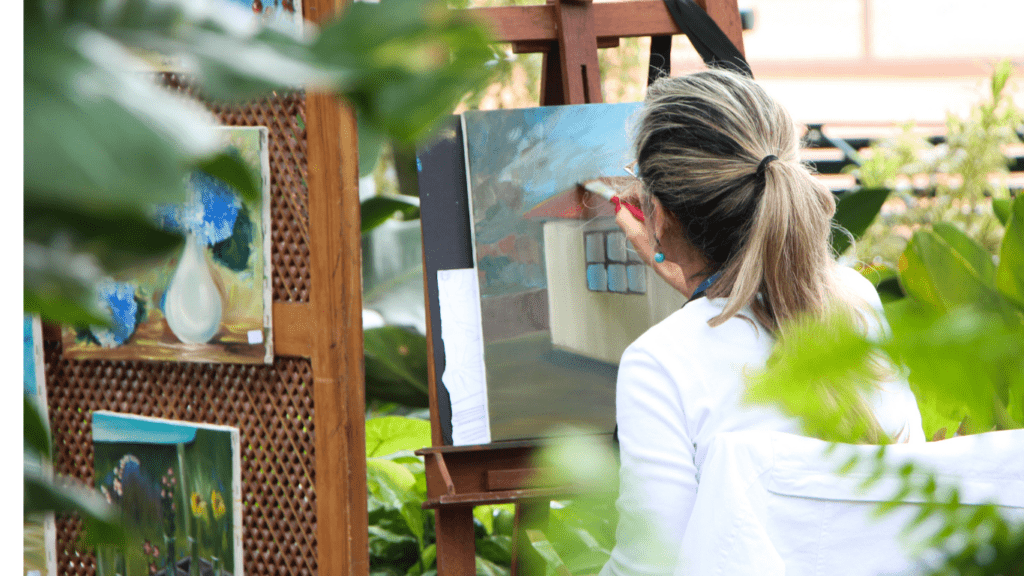The Intersection of Art and Technology
Artists are exploring digital mediums to enhance creativity. Virtual reality (VR), augmented reality (AR), and AI empower creators to develop immersive experiences. Picasso’s digital canvas and Google’s DeepDream illustrate innovative uses of technology in art.
AI-driven tools like DeepArt and RunwayML offer artists new ways to experiment. These platforms use neural networks to analyze and replicate styles from famous painters, resulting in fresh, hybrid artworks. Prominent examples include AI-generated paintings reminiscent of Van Gogh and Picasso.
Exhibits featuring AI-generated art are increasing in popularity. The 2018 auction at Christie’s featured an AI-created painting, “Portrait of Edmond de Belamy”, sold for $432,500. This sale demonstrated the growing acceptance of AI as a legitimate creative force.
Educators integrate technology into art curricula. Schools collaborate with tech companies to teach students digital art techniques. For instance, Adobe’s Creative Cloud provides students with software tools to explore digital art, enhancing traditional art education.
Collaborations between artists and technologists are producing cutting-edge installations. Interactive exhibits use sensors and machine learning to adapt to viewer interactions. The Rain Room by Random International reacts to movements, allowing guests to control the immersive environment.
The rise of AI in creative spaces challenges conventional roles in art creation. Instead of replacing artists, AI becomes a co-creator, expanding artistic possibilities. This intersection redefines creativity, making the use of technology vital in modern art ecosystems.
The Evolution of AI in Art
The incorporation of artificial intelligence into artistic endeavors has transformed both creative processes and outcomes, blending human intuition with machine efficiency.
Historical Overview
AI made its initial foray into art during the 1950s. Pioneering efforts included algorithmic compositions and computer-generated visuals. In the 1970s, artist Harold Cohen developed AARON, a program capable of creating unique drawings, establishing a foundation for future AI artistry. These early experiments highlighted AI’s potential in generating artwork, serving as a precursor to more complex creative AI systems.
Recent Developments
In the last decade, AI’s role in art has expanded significantly. Programs like DeepArt and RunwayML allow artists to emulate the styles of famous painters. Google’s DeepDream uses neural networks to create dream-like, hallucinogenic images. At Christie’s 2018 auction, an AI-generated painting sold for over $400,000, illustrating the burgeoning acceptance of AI-created art.
Educational institutions now include AI tools in art curricula, partnering with tech firms like Adobe to provide students with digital competencies. Creative collaborations between artists and technologists, such as the Rain Room by Random International, showcase installations where AI adapts to viewer interactions. These advancements indicate that AI serves not just as a tool but as a co-creator, redefining artistic boundaries.
Applications of AI in Creative Spaces

AI continues to revolutionize creative spaces by augmenting human creativity and automating tedious processes.
Visual Arts
AI in visual arts transforms creative workflows. Tools like DeepArt and RunwayML help recreate styles of iconic artists, adding new dimensions to digital paintings. GANs (Generative Adversarial Networks) enable artists to generate unique visuals, pushing the boundaries of traditional art forms. For instance, AI-generated artworks have fetched high prices at auctions, showing their growing acceptance and value.
Music and Sound Design
AI reinvents music, making composition more accessible. Software like Amper Music and AIVA (Artificial Intelligence Virtual Artist) allows musicians to compose original scores efficiently. AI analyzes current trends, suggesting chord progressions and melodies. Projects like OpenAI’s MuseNet extend musical possibilities by blending genres and styles that were previously unthinkable.
Literature and Writing
AI transforms literature by assisting writers in ideation and editing. Natural Language Processing tools like GPT-3 generate text that mimics human writing, helping authors draft content or explore creative possibilities. Writers use tools like Grammarly and Hemingway to enhance their prose and ensure clarity. AI-driven story generators inspire narratives, broadening the scope of literary creativity.
Film and Animation
AI streamlines film and animation by optimizing pre- and post-production processes. Tools like Adobe Sensei automate video editing tasks, such as color correction and scene detection, saving time for creators. AI-driven platforms generate lifelike animations, as seen in films created using technologies like deep learning. AI assists in scriptwriting, camera angle suggestions, and even acting performances via deepfake technology, pushing the envelope of cinematic innovation.
Benefits of AI in Art
AI is transforming art by providing new tools and methods that push creative boundaries.
Enhanced Creativity
AI fosters enhanced creativity in art. It aids artists in generating unique styles and forms by analyzing vast datasets of past artworks. Neural networks like GANs (Generative Adversarial Networks) produce unique visuals by learning and mimicking different art styles. For instance, artists have used AI to create pieces that blend the styles of Van Gogh and Monet, producing entirely new artistic expressions. AI also offers endless inspiration by generating unexpected patterns and compositions, encouraging artists to explore novel ideas they might not have considered otherwise.
Efficiency and Productivity
AI boosts efficiency and productivity in the art world. It automates repetitive tasks like coloring, rendering, and editing, freeing artists to focus on more complex creative processes. Tools like RunwayML enable rapid prototyping by allowing artists to experiment with different styles and techniques in real-time. AI-generated art can be produced and refined faster than traditional methods, reducing overall project time. For example, in animation, AI helps streamline frame-by-frame editing and scene transitions, dramatically cutting down production time and cost.
Challenges and Ethical Considerations
Integrating AI into creative processes brings unique challenges and ethical dilemmas. Below, I explore key issues affecting authenticity, originality, and intellectual property.
Authenticity and Originality
Authenticity is a crucial concept in art, and AI interventions often blur the lines. With AI replicating styles of renowned artists, it’s hard to determine the originality of AI-generated works. For example, projects using DeepArt can mimic Van Gogh’s style, raising questions about the artist’s role in creation.
Ethical concerns emerge when AI-generated pieces sell for high prices; some purists argue these works lack soul and genuine artistic intent. The key debate centers on whether art produced by algorithms holds the same value as human-created art, especially given the machine’s role in mimicking existing styles rather than creating something inherently unique.
Intellectual Property
Intellectual property laws face stress-tests with AI-generated content. Copyright issues arise when determining the ownership of works created by AI. If an AI-driven tool like RunwayML creates a painting, it’s unclear if the developer, the user, or the AI itself holds the rights. Current laws don’t cater to such scenarios, leading to potential disputes.
Beyond ownership, there’s the issue of patentability. For instance, AI in music composition raises questions about whether AI-generated melodies can be patented and how they should be credited. Intellectual property frameworks need updates to address these challenges, ensuring creators’ rights are balanced with technological advancements in art.
Case Studies of AI in Art
AI’s role in the art world is exemplified through various groundbreaking projects and emerging talents. Let’s explore some notable projects and the innovators behind them.
Notable Projects
- Edmond de Belamy Portrait
Created by Paris-based art collective Obvious, the Edmond de Belamy portrait stands as a key AI-driven artwork. Using a Generative Adversarial Network (GAN), the team generated this piece, which sold for $432,500 at a Christie’s auction in 2018. The portrait exemplifies how AI-generated works are gaining traction in the traditional art market.
- DeepDream by Google
DeepDream, an algorithm developed by Google, transforms ordinary images into dream-like visuals using neural networks. It highlights how AI can push creative boundaries, making new forms of digital art accessible to artists globally. DeepDream has inspired numerous artists to experiment with algorithmic techniques in their own work.
- The Next Rembrandt
A collaboration between Microsoft, Delft University, and Mauritshuis, The Next Rembrandt project used AI to create a new painting in the style of Rembrandt. By analyzing his works, the AI generated a digital image mimicking Rembrandt’s distinctive techniques. This project demonstrates the potential of AI to revitalize historical art styles with modern technology.
Emerging Artists and Innovators
- Mario Klingemann
Mario Klingemann is a pioneering artist known for his work with neural networks and coding. He uses algorithms to create complex and thought-provoking art, frequently delving into themes related to AI and human creativity. His innovative approach showcases how artists can integrate AI seamlessly into their creative processes.
- Anna Ridler
Anna Ridler merges data sets with visual art to produce unique pieces. Using AI, she creates animated artworks from hand-drawn images, investigating the relationship between technology and nature. Ridler’s work provides a compelling example of how AI can contribute to contemporary artistic discourse.
- Sougwen Chung
An interdisciplinary artist, Sougwen Chung combines AI with traditional drawing techniques. Her project, Drawing Operations, uses robotic arms controlled by neural networks to collaborate with her in creating art. Chung’s integration of AI and robotics illustrates the collaborative potential between humans and machines in the creative field.
Overall, these case studies highlight the transformative impact of AI on art, from generating high-value artworks to enabling new forms of creative expression.





